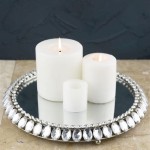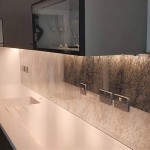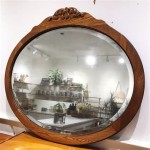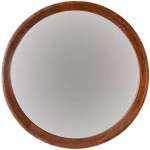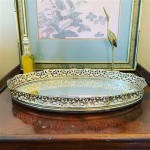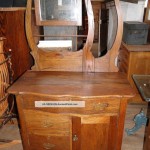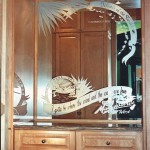Round Mirror vs. Square Mirror: A Comprehensive Comparison for Interior Design
Mirrors serve a dual purpose within interior design, functioning both as practical tools for personal grooming and as aesthetic enhancements that can significantly impact the perceived space and light within a room. The shape of a mirror plays a crucial role in achieving the desired design effect. Among the various shapes available, round and square mirrors represent two of the most popular and versatile choices. This article provides a comprehensive comparison of round and square mirrors, examining their distinct characteristics, advantages, and applications to assist in making informed decisions for interior design projects.
Aesthetic Considerations: Shape and Style
The fundamental difference between round and square mirrors lies in their geometric shape. Round mirrors, characterized by their curved edges and absence of corners, often evoke a sense of softness, fluidity, and organic charm. This shape tends to soften harsh angles and create a more relaxed and inviting atmosphere. They often feel more modern and even playful, depending on the frame and surrounding decor. A round mirror can introduce a visual break from the predominantly linear elements often found in architectural structures and furniture, adding a touch of visual interest and harmony. In interior design styles that prioritize softness and curvilinear shapes, such as bohemian or mid-century modern, round mirrors are particularly well-suited.
Conversely, square mirrors, defined by their straight edges and right angles, project a sense of structure, order, and formality. Their inherent geometric precision complements spaces that emphasize clean lines and a structured aesthetic. Square mirrors integrate seamlessly into contemporary, minimalist, and traditional interiors, contributing to a sense of balance and symmetry. They can reinforce the architectural lines of a room, creating a cohesive and intentional visual impact. The sharp lines of a square mirror can emphasize the perceived space and define the area they occupy. This defined presence can be especially advantageous in spaces where a grounded and structured feeling is desired.
The frame surrounding the mirror significantly influences its overall aesthetic. A round mirror with an ornate, gilded frame can lend an air of vintage elegance, while a minimalist, frameless round mirror reinforces a contemporary aesthetic. Similarly, a square mirror with a thick, dark frame can enhance its sense of solidity and presence, while a thin, metallic frame imparts a modern and sophisticated look. Careful consideration of the frame is crucial to ensuring that the mirror aligns with the overall design style of the space.
Functional Attributes: Light Reflection and Space Perception
Mirrors are commonly used to enhance the perceived size of a room and to amplify natural and artificial light. The shape of the mirror influences its effectiveness in achieving these functional goals. Round mirrors, due to their curved surface, tend to distribute light more evenly and diffusely throughout a space. This can create a softer, more ambient illumination, especially effective in smaller rooms or areas with limited natural light. The lack of corners in a round mirror allows light to bounce freely without being trapped or redirected in harsh angles.
Square mirrors, with their flat surface and defined edges, reflect light in a more direct and focused manner. While they still contribute to overall brightness, they tend to create more distinct reflections and can highlight specific areas of a room. This direct reflection can be advantageous in areas where task lighting is needed, such as vanity areas or dressing rooms. The straight edges of a square mirror can also create the illusion of greater width or height depending on the orientation in which the mirror is installed. A horizontally placed square mirror can visually widen a narrow space, while a vertically oriented square mirror can elongate a low ceiling.
The size of the mirror, regardless of its shape, plays a crucial role in its functional impact. A large round mirror can become a focal point, creating a dramatic statement and maximizing light reflection. Similarly, a large square mirror can serve as a visual anchor, defining a space and creating a sense of expansiveness. Conversely, smaller round or square mirrors can be used as decorative accents, adding subtle touches of light and reflection to specific areas.
Placement and Application: Room-Specific Considerations
The optimal placement of round and square mirrors depends on the specific room and the desired design outcome. In bathrooms, round mirrors are frequently chosen for vanities, offering a softer and more flattering reflection for grooming purposes. They can also complement curved bathroom fixtures, such as sinks and tubs, creating a cohesive and harmonious design. A cluster of smaller round mirrors can create a whimsical and visually interesting arrangement above a console table or dresser.
Square mirrors are particularly well-suited for entryways and hallways, where their structured shape can reinforce the architectural lines of the space and create a sense of order. A large square mirror placed opposite a window can significantly amplify natural light, brightening and expanding the perceived size of the area. They are also commonly used in living rooms, often placed above fireplaces or sofas to create a focal point and enhance the sense of symmetry. In dining rooms, a square mirror can reflect candlelight and create a more intimate and inviting atmosphere.
The height at which a mirror is hung is another important consideration. Mirrors should be positioned at eye level to ensure a comfortable and functional viewing experience. The surrounding decor also plays a role in the overall aesthetic impact. A round mirror paired with soft textiles and organic materials can reinforce a relaxed and natural feel, while a square mirror combined with sleek furniture and metallic accents can enhance a modern and sophisticated ambience. The choice between round and square mirrors ultimately depends on the desired aesthetic, functional needs, and the overall design context of the space.

Round Vs Square Bathroom Mirrors Tips For Choosing The Right Shape In Singapore Midas Glass Contractor Direct Aluminum

Should Bathroom Vanity Mirrors Be Round Or Square Wellfor

Rectangle Or Round Mirror Vanders Glass

Round Mirrors Vs Square Design Space Style Guide Dreamy Walls

Round Vs Square Bathroom Mirrors Tips For Choosing The Right Shape In Singapore Midas Glass Contractor Direct Aluminum

Round Vs Square Bathroom Mirrors How To Choose The Right Shape For Your Space In Singapore Midas Custom Mirror

Round Vs Square Bathroom Mirrors How To Choose The Right Shape For Your Space In Singapore Midas Custom Mirror

How Vanity Mirror Shapes Impact Your Space Modern Mirrors

Round Vs Square Bathroom Mirrors Tips For Choosing The Right Shape In Singapore Midas Glass Contractor Direct Aluminum

Round Mirror In Square Frame Design Ideas
